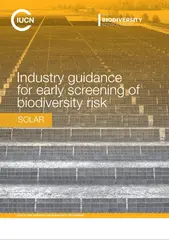Achieving a climate-resilient future in line with the Paris Agreement targets to reduce emissions by 45% by 2030, and achieve net zero by 2050, requires an immediate, sustained and far-reaching transformation in energy, land-use, infrastructure and industrial systems within our societies.
At scale, renewable energy development can play a prominent role in answering global energy demand while decarbonising the economies. However, deploying vast renewables projects development can lead to unintended consequences on biodiversity and people, throughout the whole project life-cycle (from design and permitting to the operational and decommissioning phases).



